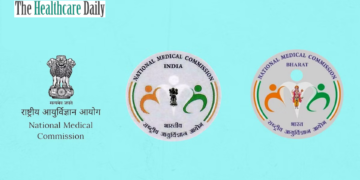According to the “Health Report of Corporate India 2023′, India faces one of Asia’s highest medical inflation rates. The report is released by the insurance technology company Plum. The study highlights a huge 14% increase in healthcare costs which is burdening 71% of employees who cover these expenses personally.
The report’s findings flashes light on the financial difficulties faced by the workforce amid India’s expanding job market which is set to grow from 522 million in 2022 to an estimated 569 million by 2030. Alarmingly, as outlined in a Niti Aayog report, only 15% of this workforce receives any health insurance support from their employers. This places a disproportionate healthcare expenditure burden on over 90 million individuals, where costs exceed 10% of their total expenses. A mere 12% of companies offer telehealth support.
The report gives alarming trends in health management behaviours. Approximately 59% of individuals skip their annual health checkups, while a staggering 90% neglect regular doctor consultations for health monitoring. These statistics raise concerns about the potential long-term consequences on individual well-being and overall health outcomes.
Saurabh Arora, co-founder and CTO of Plum said, “An average person spends 90,000 hours working, nearly a third of their life. Employee health should be a top priority for organizations, not only from a humanitarian perspective but also as a strategic investment in their workforce. Thus, advocating for comprehensive healthcare benefits, encompassing insurance, primary, and preventive care is crucial.”

What is a Workforce Insurance?
Workforce insurance refers to the insurance coverage provided by a employers for their employees. It has various types of insurance plans and it’s benefits are aimed at protecting employees against certain risks or providing financial assistance in specific situations related to their work or health.
Common Types of Workforce Insurance
Health Insurance
Coverage that helps employees pay for medical expenses, including doctor visits, hospitalization, prescription drugs, and other healthcare services.
Life Insurance
Provides a financial benefit to the family or beneficiaries of an employee in the event of their death.
Disability Insurance
Offers income protection to employees who are unable to work due to a disability by replacing a portion of their income.
Workers’ Compensation
Provides benefits to employees who suffer work-related injuries or illnesses, covering medical expenses and lost wages.
Critical Illness Insurance
Offers a lump-sum payment if the employee is diagnosed with a critical illness specified in the policy.
Employers may offer these insurance options as part of their benefits package to attract and retain talent, as well as to support their employees’ well-being. The coverage and specifics of workforce insurance can vary widely based on the employer’s policies, the industry, and the country’s regulations.
How to Select the Best Workforce Health Insurance?
Selecting the ideal workforce insurance involves assessing employee needs, coverage comprehensiveness, and financial feasibility. Begin by evaluating the healthcare requirements of your workforce—consider medical, dental, vision, and potential disability needs. Seek plans that offer a balance between comprehensive coverage and reasonable costs. Assess the insurance provider’s network of healthcare professionals and facilities, ensuring accessibility for employees. Consider the ease of claim processes and the insurer’s track record in prompt settlements. Made the insurance options to fit the diverse needs of your workforce, focusing on plans that offer flexibility, necessary coverage, and reliable support for employees’ well-being and peace of mind.
Importance of Workforce Insurance
Workforce insurance is importannt for both companies and employees. For companies, it’s a strategic investment in their workforce, promoting loyalty and attracting top talent by offering comprehensive health coverage and financial protection. It enhances productivity by ensuring a healthy and secure workforce, and minimizing absenteeism due to illness or injury. For employees, it provides peace of mind, financial stability during health crises, and access to quality healthcare. It safeguards their well-being, encourages preventative care, and mitigates the financial burden of medical expenses. Ultimately, robust workforce insurance nurtures a symbiotic relationship, where companies prioritize employee welfare, fostering a resilient and thriving workplace.
























